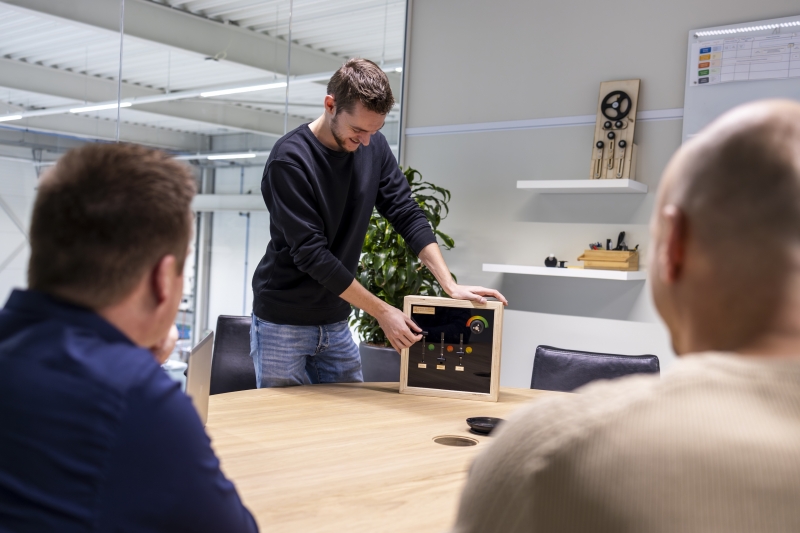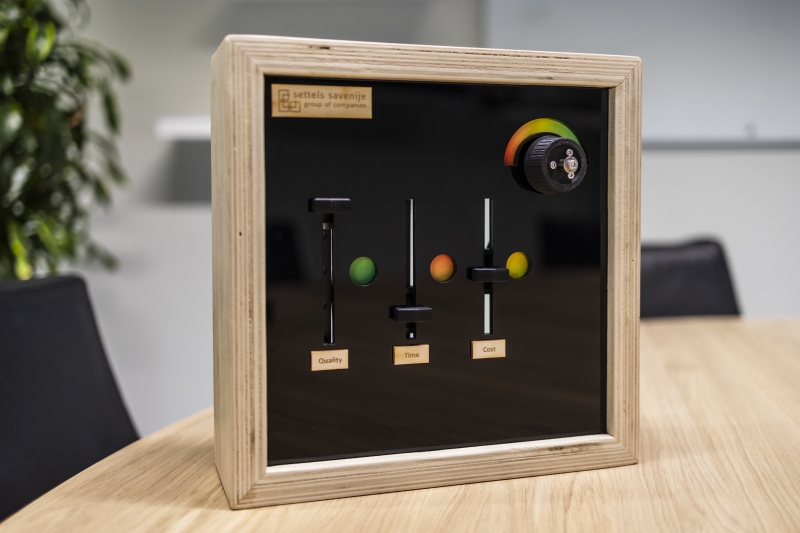From idea to realization: Creating awareness with the QTLC tool
Every day, we strive to design and deliver the best solutions for our customers. However, sometimes, our projects do not just solve external challenges, they also inspire us to improve our own way of working. In this interview, Maikel Michiels highlights one such solution: the QLTC visualization tool.

Maikel Michiels, Manufacturing Architect at Settels Savenije Advanced Systems, focuses on the manufacturability of complex components and systems. By integrating manufacturing expertise into the engineering process and fostering a collaborative mindset between engineers and operators, he bridges the gap between design and execution.
What does QLTC stand for?
"QLTC stands for Quality, Logistics, Technology, and Cost. These are the pillars we use to track project progress. Every project involves trade-offs between these areas. Ideally, all pillars are ‘green’, meaning everything is balanced. But that is often easier said than done because people do not always realize how these factors affect each other and the project as a whole. To visualize this trade-off between (technological) quality, development time and costs, we designed this tool.”
How does the tool work?
"The QLTC tool was designed by Jelle van Putten, a Junior Test Engineer who joined us as an intern through Stichting InnAut and is now an essential part of the team. He created a sliding mechanism, where each slider represents one of the factors. Behind the sliders, an elastic cord of a set length is attached. So for example, when you move the quality slider up, the cost and time sliders go down, visually showing how trade-offs work.”
"We also added a knob to simulate market conditions. Turning this knob adjusts the elasticity of the cord. In a calm market, the sliders lean greener. But in a busy market, they shift toward red, signaling higher costs and longer timelines."

How does this tool improve awareness in projects?
"When clients and project teams communicate, priorities can sometimes become unclear. Should we focus on minimizing costs, a fast development time, or quality? Without clarity, wrong assumptions can lead to poor decisions. The tool helps to reduce these errors by making priorities tangible and visible.
“We also wanted a simple way to show that not everything can be optimized at once. You cannot create something that is fast to develop, cost-effective, and high-quality all at the same time. The tool helps teams, clients, and suppliers visualize these trade-offs by defining key KPIs. Without prioritizing, you might end up with mediocre results on all factors. That is why it is essential to recalibrate focus at the start of a project and at every new phase."
At what stage(s) of a project do you use the tool?
“We use the tool at several key moments, like project kick-offs, release meetings, and engineering reviews. It is also helpful during assembly, so operators know whether for example speed or precision should be prioritized.”
Do you think the tool will continue to bring value to your project meetings?
"Even though the tool is still fairly new, it is already showing its value across various teams and projects. We are confident it will continue to improve collaboration and communication, helping our teams stay focused on the priorities that matter most.”
